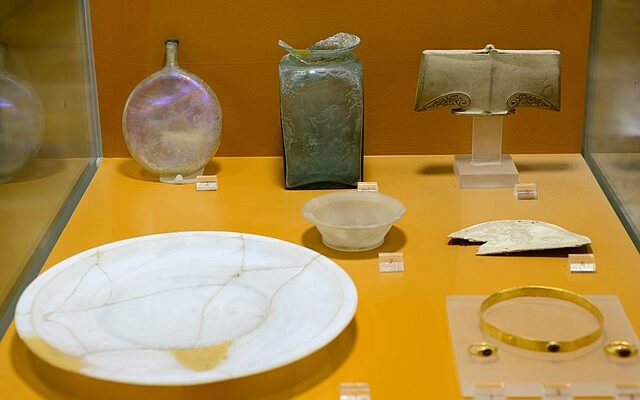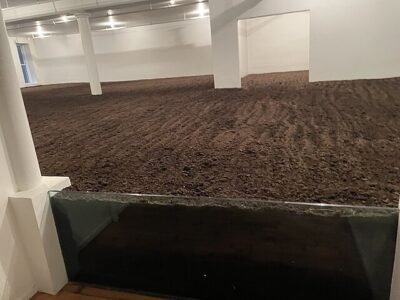
Several ancient Roman archaeological and construction sites have produced some remarkable discoveries, including glass shards from shattered bottles so beautiful that they have been placed in modern pieces of jewelry due to the iridescent colors found inside.
Now, scientists have come to realize that over the thousands of years laying underneath the earth, the artifacts have become coated in a naturally formed substance that might have modern, technological applications.
For Fiorenzo Omenetto and Giulia Guidetti, professors of engineering at the Tufts University Silklab and experts in materials science, what’s fascinating is how the molecules in the glass rearranged and recombined with minerals over thousands of years to form what are called photonic crystals – ordered arrangements of atoms that filter and reflect light in very specific ways, according Eureka Alert.
Photonic crystals have many applications in modern technology. They can be used to create waveguides, optical switches and other devices for very fast optical communications in computers and over the internet. Since they can be engineered to block certain wavelengths of light while allowing others to pass, they are used in filters, lasers, mirrors, and anti-reflection (stealth) devices.
In a recent study published in the Proceedings of the National Academy of Sciences (PNAS) USA, Omenetto, Guidetti and collaborators report on the unique atomic and mineral structures that built up from the glass’ original silicate and mineral constituents, modulated by the pH of the surrounding environment, and the fluctuating levels of groundwater in the soil.
The project started by chance during a visit to the Italian Institute of Technology’s (IIT) Center for Cultural Heritage Technology. “This beautiful sparkling piece of glass on the shelf attracted our attention,” said Omenetto. “It was a fragment of Roman glass recovered near the ancient city of Aquileia Italy.” Arianna Traviglia, director of the Center, said her team referred to it affectionately as the ‘wow glass’. They decided to take a closer look.
The researchers soon realized that what they were looking at was nanofabrication of photonic crystals by nature. “It’s really remarkable that you have glass that is sitting in the mud for two millennia and you end up with something that is a textbook example of a nanophotonic component,” said Omenetto.
According to the team, the exterior of the glass features a distinctive golden mirrored patina that results from the formation of Bragg stacks. These are structures formed by layers of silica with varying degrees of density.
Guidetti told The Debrief that these structures occur when “the soil and minerals surrounding the glass shards, combined with rainwater and other factors, “determined the diffusion of minerals and a cyclical corrosion of the silica in the glass.”
The researcher added, “At the same time, assembly of 100 nanometer-thick layers combining the silica and minerals also occurred in cycles. The result is an incredibly ordered arrangement of hundreds of layers of crystalline material.”
The team’s aim is to find ways of replicating and accelerating the processes that lead to the unique atomic and material properties seen in the glass’s exterior. By doing so, researchers could potentially uncover methods for growing optical materials instead of relying solely on manufacturing.
The pair’s findings served as the focus of a recent study published in the Proceedings of the National Academy of Sciences.










Mass produce chem alone
$$$$